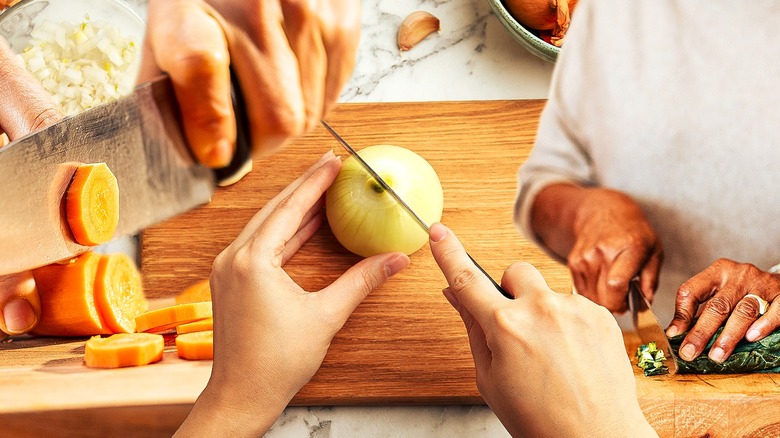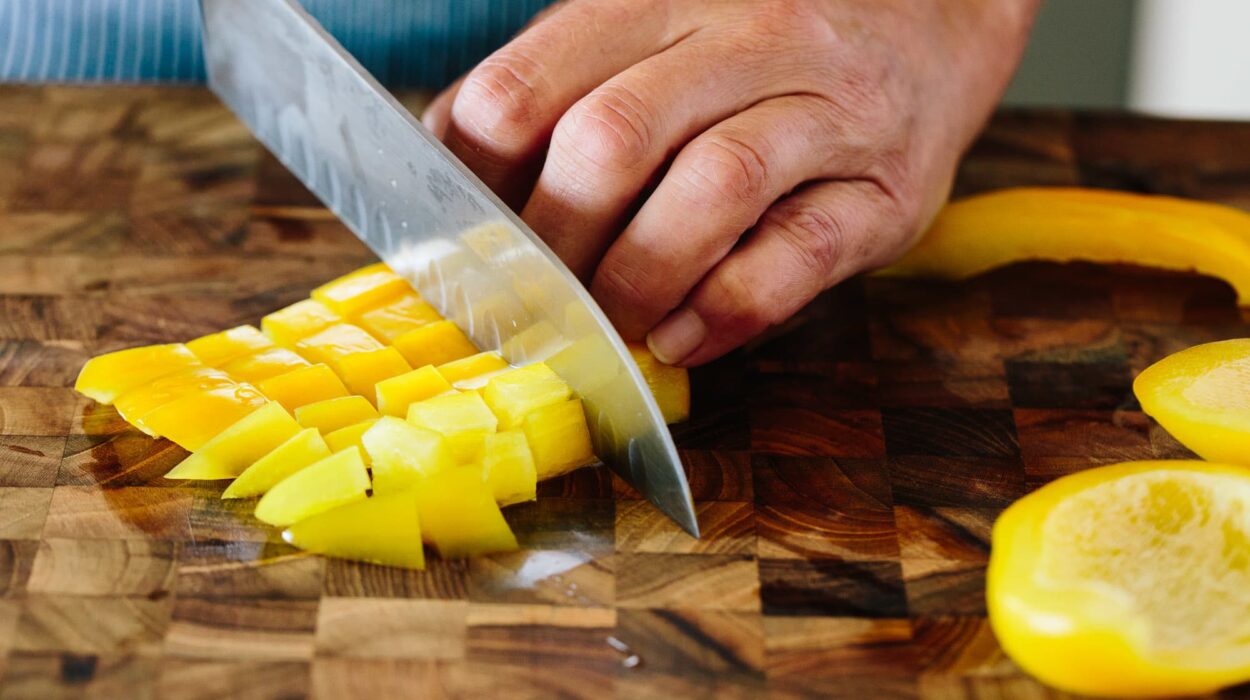When it comes to kitchen essentials, cutting boards are at the top of the list. Many people often wonder, why might a chef choose a plastic cutting board over a wooden one? Both plastic and wooden cutting boards have their unique advantages and disadvantages, and several factors can influence a chef’s choice. In this article, we’ll delve into the reasons behind this decision, examining the benefits of plastic cutting boards and how they may offer a better solution for certain situations.

Tremendous Benefits of Plastic Cutting Boards
Plastic cutting boards have gained popularity in recent years due to their numerous advantages. From being lightweight to easy maintenance, these benefits make plastic cutting boards a favored choice among professional chefs as well as home cooks.
Hygiene and Food Safety
One of the primary reasons chefs prefer plastic cutting boards is hygiene. Unlike wooden cutting boards, which can harbor bacteria in their porous surface, plastic cutting boards are non-porous and less likely to retain harmful bacteria. This feature is particularly important in commercial kitchens, where maintaining stringent food safety standards is crucial.
Plastic cutting boards are also easier to sanitize. They can be cleaned using a dishwashing machine, ensuring that all harmful bacteria are effectively eliminated, thereby helping to prevent foodborne illnesses.
Durability and Longevity
Plastic cutting boards are highly durable and can withstand extensive use without showing significant signs of wear and tear. While wooden cutting boards can develop deep scratches and grooves that are difficult to clean, plastic cutting boards are more resilient. This quality ensures a longer lifespan, making plastic cutting boards a cost-effective option for professional kitchens.
Moreover, plastic cutting boards can be resurfaced relatively easily. If deep grooves or scratches do appear, the surface can be smoothed out, restoring the board to its original condition.

Delighted by Easy Maintenance
For busy chefs, the ease of maintenance is a significant consideration when selecting kitchen tools. Plastic cutting boards require minimal effort to maintain, allowing chefs to focus more on their culinary creations and less on cleaning chores.
Stain and Odor Resistance
Another advantage of plastic cutting boards is their resistance to stains and odors. Unlike wooden boards, which can absorb the colors and smells of certain foods (such as garlic, onions, and beets), plastic boards remain relatively unaffected. This characteristic is particularly important in professional kitchens, where cross-contamination of flavors must be avoided at all costs.
Portability and Convenience
Plastic cutting boards are generally lighter than their wooden counterparts, making them easier to handle and transport. This portability is especially beneficial in catering and outdoor cooking scenarios, where mobility is a key factor.

Technological Innovations in Plastic Cutting Boards
In recent years, technological advancements have further enhanced the features of plastic cutting boards. Modern plastic boards often come with additional functionalities designed to improve their performance and convenience.
Antimicrobial Properties
Some plastic cutting boards are now manufactured with embedded antimicrobial agents, which help inhibit the growth of bacteria and mold. These boards not only provide an extra layer of protection against contamination but also prolong the overall lifespan of the cutting board.
Cutting Guides and Measurement Markings
Many contemporary plastic cutting boards are equipped with cutting guides and measurement markings, allowing chefs to achieve precise cuts and portion sizes. This added functionality streamlines food preparation, making tasks more efficient and consistent.
Frequently Asked Questions
Why do chefs prefer plastic cutting boards?
Chefs prefer plastic cutting boards for their hygiene, ease of maintenance, and durability. Plastic cutting boards are non-porous, making them less likely to retain bacteria. They can also be cleaned more thoroughly in a dishwasher, which helps ensure food safety.
How do plastic cutting boards compare to wooden ones in terms of hygiene?
Plastic cutting boards are generally considered more hygienic than wooden ones because their non-porous surface is less likely to harbor bacteria. Additionally, they can be sanitized more easily, reducing the risk of foodborne illnesses.
Can plastic cutting boards be restored if they get scratched?
Yes, plastic cutting boards can be restored. If they develop deep scratches or grooves, the surface can be smoothed out to restore the board to its original condition. This quality contributes to their longevity and cost-effectiveness.
For more information on cutting board safety, please visit cutting board safety.
Want to know more about maintaining your cutting board? Check out this guide.
As an Amazon Associate, I earn from qualifying purchases.


